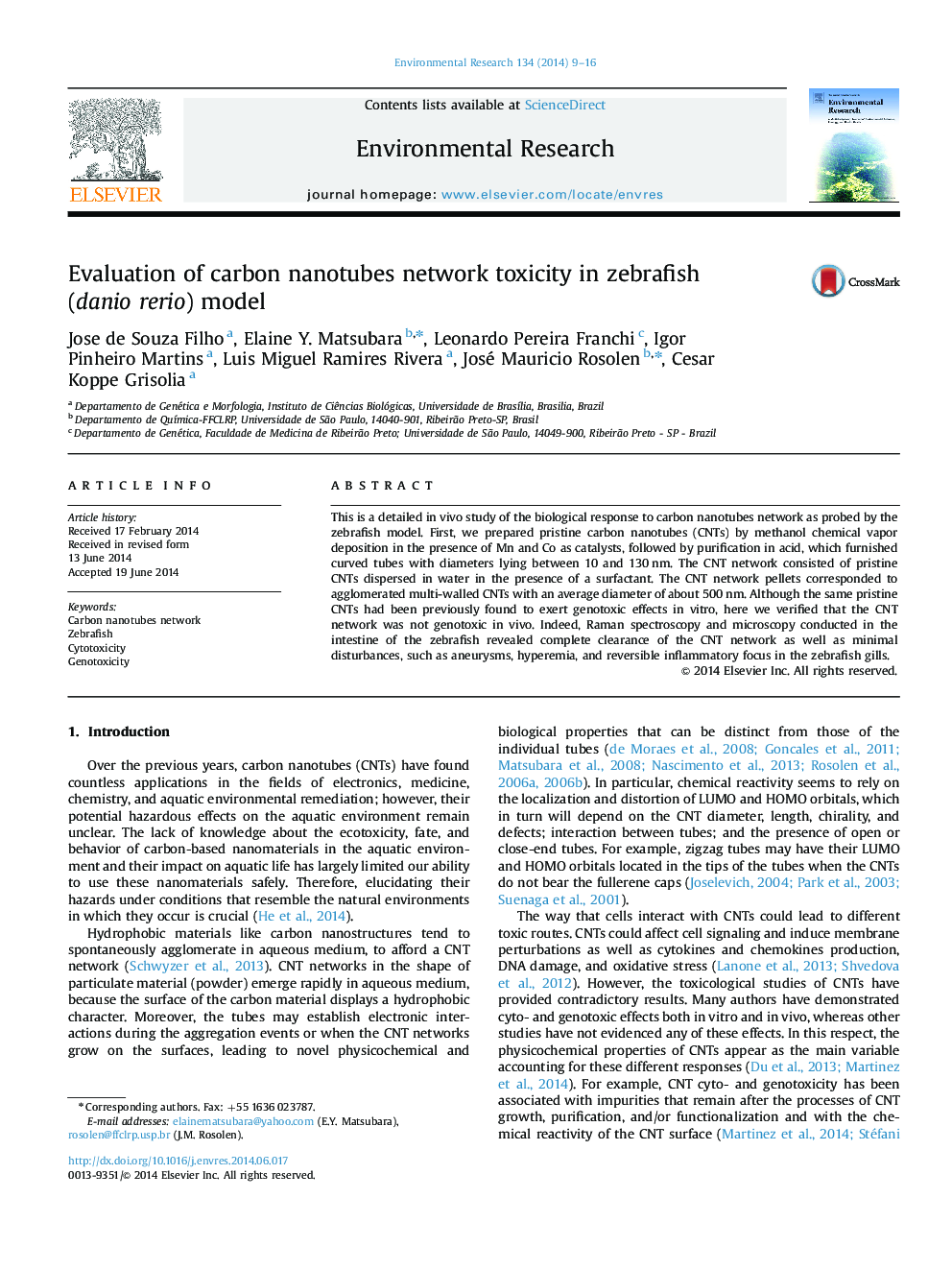| Article ID | Journal | Published Year | Pages | File Type |
|---|---|---|---|---|
| 6352559 | Environmental Research | 2014 | 8 Pages |
Abstract
This is a detailed in vivo study of the biological response to carbon nanotubes network as probed by the zebrafish model. First, we prepared pristine carbon nanotubes (CNTs) by methanol chemical vapor deposition in the presence of Mn and Co as catalysts, followed by purification in acid, which furnished curved tubes with diameters lying between 10 and 130Â nm. The CNT network consisted of pristine CNTs dispersed in water in the presence of a surfactant. The CNT network pellets corresponded to agglomerated multi-walled CNTs with an average diameter of about 500Â nm. Although the same pristine CNTs had been previously found to exert genotoxic effects in vitro, here we verified that the CNT network was not genotoxic in vivo. Indeed, Raman spectroscopy and microscopy conducted in the intestine of the zebrafish revealed complete clearance of the CNT network as well as minimal disturbances, such as aneurysms, hyperemia, and reversible inflammatory focus in the zebrafish gills.
Keywords
Related Topics
Life Sciences
Environmental Science
Health, Toxicology and Mutagenesis
Authors
Jose de Souza Filho, Elaine Y. Matsubara, Leonardo Pereira Franchi, Igor Pinheiro Martins, Luis Miguel Ramires Rivera, José Mauricio Rosolen, Cesar Koppe Grisolia,
